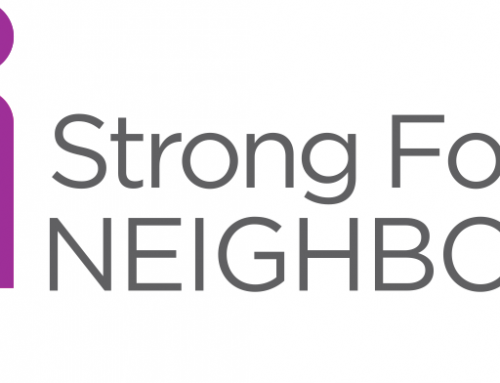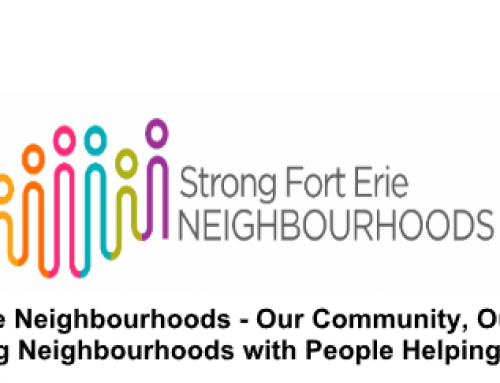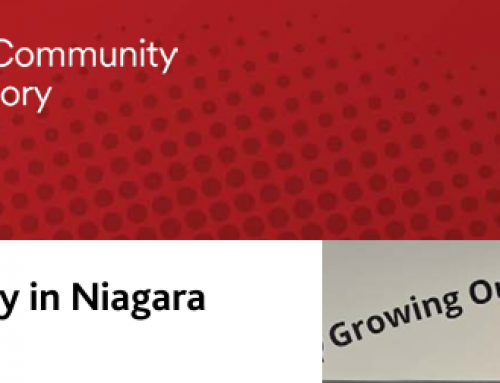This blog is part of a 7-part series about Mental Health in England. Check out the links below to read other blogs in this series.
A British study entitled Patient suicide: the impact of service changes was recently published in response to a concern that there was little evidence for how services reduce suicide. The study examined the results of implementing recommendations from a major report for enhanced suicide care. There were a number of recommendations including information sharing, specialized teams, and implementation of suicide policies and procedures. For example, a policy on sharing information with the criminal justice system was shown to reduce suicide by 24%. The significant aspect of this study was its broad community focus. One of its key recommendations, create a learning culture based on multi-disciplinary review, indicated that collaboration within the community was one of the key drivers for reduced suicide rates.
Implications For Niagara
Worldwide, one person kills themselves every 40 seconds (WHO, 2014). In Niagara 9.8 individuals per 100,000 population kill themselves every year. The Ontario average is 7.7 individuals.
I chose to end this blog series on a serious topic and with a plea. Suicide is the worst case scenario for those suffering from mental illness and or addictions. Suicide risk increases exponentially for those with a diagnosable mental illness and or addiction; as service providers we sometimes feel hopeless as a result.
However, there is hope and that hope rests in our community response. The Niagara Suicide Prevention Coalition has been valiantly producing reports and educating our community on the need for a unified response to suicide. The recent World Health Organization Report on Suicide Prevention advocates for the value of community collaboration regarding suicide. Chapter 6, of the WHO report specifies that stronger community connections and collaborative efforts can offset the high mortality rates for individuals suffering with mental illness and addictions.
Each of my blogs focused on a learning need or problem within my area of practice:
- Blog 1 relayed the value of Peer to peer visits
- Blog 2 outlined some thoughts on privatization of our services
- Blog 3 highlighted the pressures of current and emerging data requirements
- Blog 4 struggled with questions related to the complexities of our legislative obligations
- Blog 5 highlighted some of the dynamics of fully incorporating a Recovery perspective
- Blog 6 identified core competencies needed for our work force
- Blog 7 brings forward the exigencies of suicide prevention
However, there was a prevailing theme within the various topics; connecting for shared problem solving is essential to resolving the myriad issues facing our sector.
In Niagara we have a particular vehicle that relies on good will and promises change, our Mental Health and Addictions Charter. The Charter, a vision shared by over 65 groups in Niagara, is necessary, but not sufficient, for us to move forward. On November 12th, Niagara Connects is hosting a community meeting to outline Charter related action statements. This meeting will test our commitment to problem solve as a community.
Will we operationalize the charter into a series of actionable statements or, will it languish on the virtual bookshelf like so many strategic plans? Will we sacrifice some of our autonomy for the greater good or will we express our commitment in self-serving platitudes?
Let’s hope for the best because a community working together can save lives.
George Kurzawa
Executive Director
Canadian Mental Health Assocation, Niagara Branch
gkurzawa@cmhaniagara.ca
Other Blogs In This Series:
- Part 1: Mental Health in England – Peer-to-Peer Exchange
- Part 2: Mental Health in England – Can Private Be Better?
- Part 3: Mental Health in England – Workforce Development Statistics Gone Wild
- Part 4: Mental Health in England – What Does Smog Have to do With Mental Health?
- Part 5: Mental Health in England — Real Outcomes for Real People and Beyond
- Part 6: Mental Health in England — Values and Core Competencies The Stale Dorito Skills








